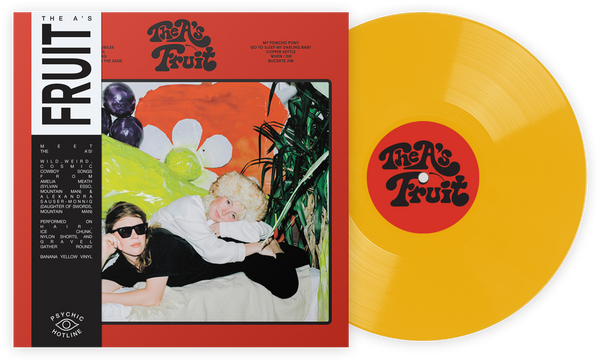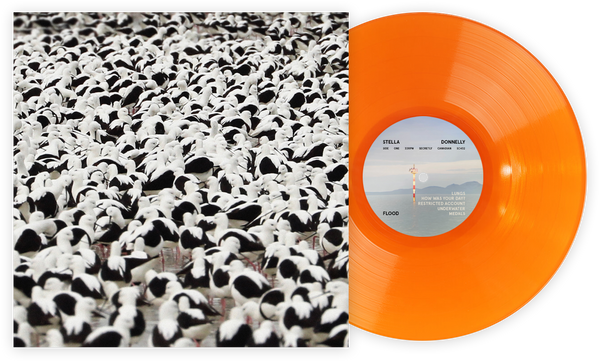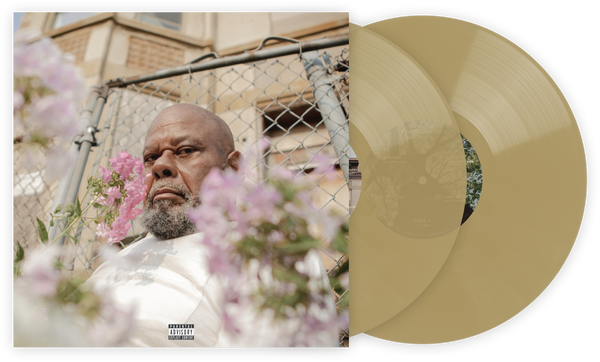In a short essay from 2001, influential electronic music composer Laurie Spiegel posed the question: “Can orchestral music and electronic sound comfortably coexist?” To the chagrin of any traditionalists who came across Spiegel’s article, and to the joy of her peers in the avant-garde community, she wrote yes. Computers and electronics can produce the sounds that an orchestra isn’t able to, while the orchestra gives the electronic artist an opportunity “to do music as part of a social framework instead of alone.”
Best known for her legendary compilation album The Expanding Universe, which was originally released in 1980 and reissued in 2012, Spiegel otherwise hasn’t put out a lot of music. But she recently composed a piece for the London Contemporary Orchestra, entitled “Only Night Thoughts,” as part of a BBC televised concert program called “Pioneers of Sound.” Although Spiegel’s piece recalls the shimmering, arpeggiating synths on The Expanding Universe, it doesn’t feature live electronics; “Only Night Thoughts” is all acoustic instruments. However, one particular performance on the same bill harkened back to Spiegel’s 2001 essay. Accompanied by the orchestra for a 40-minute piece was renowned composer Shiva Feshareki. Her instrument: turntables.
As performances in the realm of popular avant-garde music suggest, turntablists may well be on their way to becoming the newest musicians featured in today’s orchestras. This crossover could seem random at first, since the connotations of turntablism (record-scratching, breakbeats, dance music) and classical (you can’t dance to it) run contrary to each other. Envisioning the two combined, it’d be easy to brush it off as some kind of fad. One popular video that displays kitsch, “The Philharmonic Turntable Orchestra,” sees a roomful of tuxedo-ed players each sitting at a different record player, triggering and scratching vinyl at synchronized breakneck speed. Recordings of pianos, choirs and strings coalesce to simulate a symphony. However, it sounds more like an outtake from Endtroducing than it does a classical piece. Its crux doesn’t go beyond producing something cool — and it certainly is — for the sake of internet appeal. (At the very end, we learn this is an advertisement for the Japanese audio gear company Technics.)
In the case of Feshareki, though, her collaboration with the London Contemporary Orchestra demonstrated how the marriage of turntablism and classical music is not just appropriate, but can be highly meaningful, too. For a year, she worked with composer James Bulley on conceptualizing a long-lost symphony by the late composer Daphne Oram. Many believe that Oram’s “Still Point,” written in 1950, was the first ever composition to combine live orchestration with electronics — according to Bulley’s website, the performance instructions include “three prerecorded 78 rpm discs.” Out of the few remaining pages of sheet music and stemming from their meticulous research, Feshareki and Bulley premiered “Still Point” alongside the London Contemporary Orchestra at the Deep Minimalism festival in 2016.
They played it most recently on BBC’s televised Pioneers of Sound concert. In the event footage, the composers stand at opposite sides of the stage. Feshareki surveils three turntables along with a console for adjusting echo and delay; Bulley handles a mixing board and console for manipulating live audio from the orchestra, who are set up toward the back. The first movement is slow and moody, ending with an abrupt fortissimo that signals in Feshareki. During her solo section, she pitch-bends and slows down the records against her palm, until it becomes ever so slightly apparent that these grainy noises might be violins, horns or some other high register instrument — it’s difficult to determine. At later points, Feshareki plays simultaneously with the orchestra — you can hear static and feedback waver in the background — so that the live instruments become indistinguishable from those embedded within her three spinning discs.
The usage of turntables stresses Oram’s original thesis behind “Still Point.” Vinyl is a symbolic remnant of the studio integrated into a live context, and this gesture complexifies the nature of how time unfolds within the concert setting, which ties back into the piece’s title. Through rewinding, pausing and altering revolution speed, Feshareki controls duration; she can time-travel simply by placing the needle on a new groove. She once said in an interview about her relationship with “Still Point”: “I have always seen the turntable as a classical instrument. All of a sudden, the way I had developed my turntabling practice for the past decade, made sense to me.”
For Feshareki and wax-spinners alike, turntablism is a conduit for history. Just as the lute evokes the middle ages, or how the harpsichord evokes Bach and Mozart, warping and surface noise can elicit certain bygone eras. This describes the creative process of experimental musician Philip Jeck, who has used his turntables to remind listeners of the Titanic.
Gavin Bryars originally released “The Sinking of the Titanic” in 1975 for Brian Eno’s label Obscure Records, but in 2005 the composer wanted to incorporate a new musical element. He enlisted Jeck to reconstitute “Titanic” with the addition of turntables, for a performance at a contemporary classical festival in Venice with the Alter Ego Ensemble. The piece is based on the last five minutes before the namesake ship went down, and during this span, in an act of fatalism, the chamber ensemble onboard continued to play an Episcopal hymn called “Autumn.” Bryars’ sheet music calls for an ongoing repetition of “Autumn” while other elements surround the core melody, such as woodblock players tapping out Morse code and clips of interview audio from survivors. For that 2005 Venice performance, released as an album a few years later, Jeck helped Bryars execute his piece to the fullest extent.
It begins with crackling vinyl, a sign of ruin and desolation — as if all remaining history of the Titanic is forever lost at sea; or these crackles are like the ship’s final flickers of electricity before its complete submersion within salt water. Low tonal hums gradually begin to rise above the staticy surface noise, but they ebb and flow in volume: nothing is steady, and it’s like this for over 10 minutes. Soon there are bells, maybe seagulls, there’s even some sort of creaking sound. And then, enter “Autumn.” The rest of this live recording is an interplay between Jeck, whose vinyl is a haunting reminder of tragedy, and Alter Ego, whose strings portend the Titanic’s outcome, prolonging five fateful minutes to over an hour. At one point the ensemble is manipulated, presumably by Jeck, to sound like an old ballroom record (think The Caretaker) before returning to their normal live-sound quality — like two sonic universes collapsing in on each other.
Science says that time seems to slow down during a crisis. If the ensemble communicates this phenomenon through grueling repetition, then Jeck does so, like Feshareki, by honing in on the turntable’s temporal abilities: to rewind, go from 78 to 33 rpm. Maybe he manufactured locked grooves so that his records would repeat themselves automatically, in contrast with Alter Ego’s manual repetition. (Stemming from the triumph of their 2005 collaboration, Bryars and Jeck performed the piece again in 2012, this time with the Gavin Bryars Ensemble. It was released as an album in 2014.)
Turntablism and classical music are united by their shared concern over delicacy. There’s a connection between 40 people onstage carefully tuning their instruments and straightening out their sheet music, and someone like Feshareki or Jeck setting up their record players, balancing the tonearms, making sure all the auxiliary cables are running through all the right channels. The delicacy required for handling all this gear naturally gets translated into the performance, which applies to both “Still Point” and “The Sinking of the Titanic.” For turntablists working in classical music, dropping a needle has the power to be as stimulative as a Wagnerian modulation. They can drag the record back, let go and invoke that feeling all over again.
Eli Zeger has written for Noisey, Van Magazine, Real Life, Hyperallergic, DownBeat, and others. He loves his guitar and cat!
Related Articles
Join the Club!
Join Now, Starting at $44
Exclusive 15% Off for Teachers, Students, Military members, Healthcare professionals & First Responders - Get Verified!












